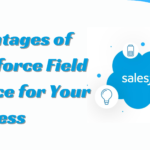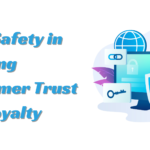Industry Secrets: Account Based Marketing
- 1 What is Account-Based Marketing (ABM)?
- 2 Tip #1: Start with Your Ideal Customer Profile (ICP)
- 3 Tip #2: Align Your Sales and Marketing Teams
- 4 Tip #3: Personalize Your Messaging and Content
- 4.1 The Power of Personalization
- 4.2 Steps to Achieve Personalization
- 4.3 Examples of Personalized Content
- 5 Tip #4: Use the Right Tools and Technology
- 6 Tip #5: Measure and Optimize Your Campaigns
- 7 Conclusion
In the modern era of marketing, businesses are continuously seeking innovative strategies to optimize their Return on Investment (ROI) and drive sustainable growth. One such strategy that has gained prominence is Account-Based Marketing (ABM). Unlike traditional marketing approaches that focus on a broad audience, ABM narrows its focus to specific target accounts, offering a highly personalized and effective marketing approach. In this comprehensive guide, we’ll delve deeper into the fundamentals of ABM, offering valuable insights and actionable tips to help you harness the full potential of this marketing strategy.
What is Account-Based Marketing (ABM)?
Account-Based Marketing (ABM) is a strategic approach that focuses on targeting specific accounts or companies rather than individual leads. This method involves creating tailored marketing efforts to meet the unique needs and interests of these target accounts. By nurturing relationships with decision-makers at these companies, ABM aims to create personalized experiences that drive engagement and conversions.
Core Components of ABM
- Targeted Approach: ABM zeroes in on a predefined set of accounts that are most likely to benefit from your product or service.
- Personalization: Tailored messaging and content that speaks directly to the pain points and needs of the target accounts.
- Alignment: Strong collaboration between sales and marketing teams to ensure coherent and unified efforts.
- Technology Utilization: Leveraging advanced tools and platforms for effective execution, tracking, and measurement.
Tip #1: Start with Your Ideal Customer Profile (ICP)
Understanding ICP
Your Ideal Customer Profile (ICP) is a hypothetical representation of the type of company that would derive the most value from your offering. Defining your ICP involves identifying key characteristics such as:
- Industry: What industries are most likely to benefit from your product or service?
- Company Size: Is your offering more suitable for small businesses, mid-sized companies, or large enterprises?
- Location: Are there geographical considerations that make certain companies a better fit?
- Revenue: What is the typical revenue range of your ideal customers?
- Pain Points: What specific challenges or needs do these companies face that your solution can address?
Developing Your ICP
- Data Analysis: Use historical data to identify common traits among your most successful accounts.
- Sales Insights: Collaborate with your sales team to gather insights on high-value clients.
- Market Research: Conduct market research to understand industry trends and potential gaps your solution can fill.
Refining Your ICP
Continually refine your ICP based on feedback and evolving market conditions. An accurate ICP serves as the foundation for effective ABM by ensuring your marketing efforts are directed towards the right accounts.
Tip #2: Align Your Sales and Marketing Teams
The Importance of Alignment
Effective ABM requires seamless collaboration between sales and marketing teams. This alignment ensures that both teams work towards common goals and deliver a consistent message to target accounts.
Steps to Achieve Alignment
- Joint Planning: Conduct joint planning sessions to outline objectives, strategies, and key metrics.
- Clear Communication: Establish regular communication channels to share insights, updates, and feedback.
- Shared Metrics: Define shared metrics to measure the success of ABM initiatives, such as engagement levels, pipeline growth, and conversion rates.
- Cross-Functional Teams: Create cross-functional teams comprising members from both sales and marketing to drive ABM campaigns.
Benefits of Alignment
- Unified Strategy: A cohesive approach that enhances the effectiveness of your campaigns.
- Better Insights: Sales can provide firsthand insights into account needs, while marketing can tailor content and messaging.
- Streamlined Processes: Improved efficiency and effectiveness in targeting and nurturing accounts.
Tip #3: Personalize Your Messaging and Content
The Power of Personalization
Personalization is at the heart of ABM. By tailoring your messaging and content to the specific needs and pain points of your target accounts, you can create more meaningful and impactful engagements.
Steps to Achieve Personalization
- Account Research: Conduct in-depth research to understand the specific needs, challenges, and goals of your target accounts.
- Customized Content: Develop content that addresses the unique concerns and objectives of each account. This can include case studies, whitepapers, and personalized emails.
- Targeted Messaging: Craft messaging that resonates with the decision-makers at each account, highlighting how your solution can solve their specific problems.
- Dynamic Content: Use marketing automation tools to deliver dynamic content that adapts based on account behavior and engagement.
Examples of Personalized Content
- Tailored Case Studies: Showcase how your product has successfully addressed similar challenges for other companies in the same industry.
- Personalized Emails: Send emails that speak directly to the recipient’s role, challenges, and goals.
- Customized Landing Pages: Create landing pages that reflect the specific needs and branding of the target account.
Tip #4: Use the Right Tools and Technology
Essential ABM Tools
ABM requires a sophisticated set of tools and technologies to execute effectively. These tools help you identify, target, engage, and measure your efforts.
Key ABM Tools
- Customer Relationship Management (CRM) Systems: CRM platforms like Salesforce or HubSpot help manage account information, track interactions, and monitor engagement.
- Marketing Automation Platforms: Tools like Marketo or Pardot enable you to automate and personalize marketing efforts at scale.
- Analytics and Reporting Tools: Solutions like Google Analytics and Tableau provide insights into campaign performance and account engagement.
- ABM Platforms: Dedicated ABM platforms like Terminus or Demandbase offer comprehensive features for account targeting, engagement, and measurement.
Integrating Tools
Ensure that your tools are integrated to provide a seamless flow of data between systems. Integration allows for better tracking, reporting, and optimization of your ABM efforts.
Leveraging AI and Data
Utilize AI-powered tools and data analytics to gain deeper insights into account behavior, predict engagement trends, and personalize your marketing efforts more effectively.
Tip #5: Measure and Optimize Your Campaigns
Importance of Measurement
Like any marketing strategy, ABM requires ongoing measurement and optimization. Tracking the performance of your campaigns helps you understand what’s working and what needs improvement.
Key Metrics to Track
- Engagement Levels: Measure how actively target accounts are engaging with your content and campaigns.
- Conversion Rates: Track the rate at which target accounts move through the sales funnel and convert into customers.
- Pipeline Growth: Monitor the growth of your sales pipeline as a result of ABM efforts.
- ROI: Calculate the return on investment to assess the financial impact of your ABM initiatives.
Optimization Strategies
- Regular Analysis: Conduct regular analysis of your ABM metrics to identify trends and areas for improvement.
- Feedback Loops: Establish feedback loops between sales and marketing to refine targeting, messaging, and content.
- A/B Testing: Use A/B testing to experiment with different content, messaging, and strategies to determine what resonates best with your target accounts.
- Continuous Improvement: Apply learnings from each campaign to optimize future efforts, ensuring that your ABM strategy evolves based on insights and outcomes.
Conclusion
Account-Based Marketing (ABM) represents a powerful shift in how businesses approach their marketing efforts, focusing on high-value accounts with personalized and targeted strategies. By understanding and implementing the tips and secrets discussed in this guide, you can develop a successful ABM strategy that drives growth, enhances ROI, and builds lasting relationships with your most valuable accounts.
From defining your Ideal Customer Profile (ICP) and aligning your sales and marketing teams to personalizing your messaging, leveraging the right tools, and measuring your success, each step is crucial to unlocking the full potential of ABM.
Are you ready to transform your marketing strategy with ABM? Explore our other blog posts on ABM for more insights or contact us today to speak with one of our ABM experts and start your journey towards a more targeted and effective marketing approach.



















